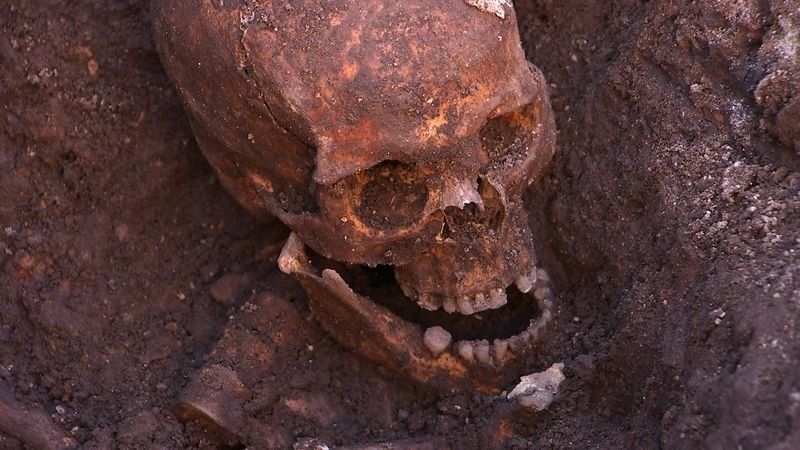In his short two-year reign, King Richard III managed to cram in a fair amount of feasting, researchers say in a new report.
Known as the "last Plantagenet king," Richard III assumed the British throne in 1483, only to be killed in battle -- the last English king to die this way -- two years later. His remains went unaccounted for until 2012, when archaeologists discovered his mangled skeleton underneath a parking lot in central England.
A recent bone chemistry analysis, conducted by the British Geological Survey and scientists from the University of Leicester, shows Richard III ate swan, crane, heron and egret, in addition to freshwater fish. The high-status meals were also washed down with copious amounts of wine.
The study, published online on Saturday in the Journal of Archaeological Science, analyzed bone samples taken from the king's teeth, femur, and rib. Each of the three bone structures develops at a different time in life, thus providing scientists a window into shifts in Richard's diet and environment from childhood until his death at the age of 32.
"Your body processes the food you eat and the water you drink and they have chemical signatures in terms of their isotope composition which gets preserved in your teeth and bone." Dr. Angela Lamb, the paper's lead author and a geochemist at the British Geological Society, told the Telegraph, explaining the science behind the findings.
Samples from Richard III's teeth, a bone which develops in childhood, indicate he moved from Fotheringhay Castle in eastern England by the time he was 7. His femur, which contains elements representing the 15 years preceding his death, shows Richard moved back to eastern England as an adolescent, at which point he adopted a "diet that matched the highest aristocracy," according to the researchers.
Based on data from the king's rib, a structure that renews itself every two to five years, researchers said they believe Richard III's diet increased in opulence in later years, corresponding with a "significant increase in feasting and wine consumption."
That included drinking an estimated daily bottle of wine for the last three years of his life, the Telegraph reported -- meaning Richard III possibly consumed up to three liters of alcohol on a daily basis.
The king, who is believed to have murdered two of his nephews during his ascent to power, is thought to have suffered from scoliosis, leading to Shakespeare's description of him as a "poisonous bunchback'd toad" in "The Tragedy of King Richard the Third."
CORRECTION: A previous version of this story said Richard III's skeleton was found under a parking garage. It was a parking lot.

